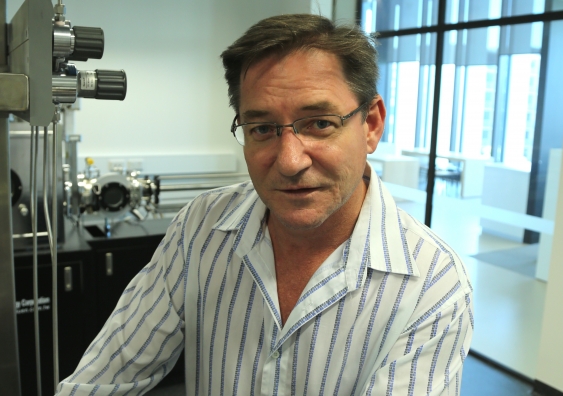The serendipitous discovery of a rust-proof ultra-light alloy in a UNSW laboratory could lead to improved fuel efficiency in transport vehicles and greatly reduce global greenhouse gas emissions.
The novel high strength magnesium-lithium alloy weighs half as much as aluminium and is 30 per cent lighter than magnesium, making it an attractive candidate to replace commonly used metals in transport vehicles.
The UNSW-led researchers, working with a team from Monash University in Melbourne, have shown the alloy forms a protective layer of carbonate-rich film upon exposure to air, making it immune to corrosion. The finding is published in the current edition of Nature Materials.
Professor Michael Ferry, from UNSW’s School of Materials Science and Engineering, said the excellent corrosion resistance of the alloy was observed by chance, when his team noticed a heat-treated sample from Chinese aluminium-production giant, CHALCO, sitting inert in a beaker of water in their laboratory.

Professor Michael Ferry, from UNSW’s School of Materials Science and Engineering. Photo: UNSW Media
‘This is the first magnesium-lithium alloy to stop corrosion from irreversibly eating into the alloy, as the balance of elements interacts with ambient air to form a surface layer which, even if scraped off repeatedly, rapidly reforms to create reliable and durable protection,” Professor Michael Ferry said.
The UNSW team partnered with scientists on the Powder Diffraction (PD) beamline at the Australian Synchrotron, to confirm that the alloy contains a unique nanostructure that enables the formation of a protective surface film.
The researchers have now turned their attention to investigating the molecular composition of the underlying alloy and the carbonate-rich surface film, to understand how the corrosion process is impeded in this ‘stainless magnesium’.
Professor Nick Birbilis, School of Materials Science and Engineering at Monash University, says viewing unprecedented structural detail of the alloy through the Australian Synchrotron will enable the team, involving researchers from Monash University, CHALCO, and Nanjing University of Technology in China, to work toward commercialising the new metal.
‘We’re aiming to take the knowledge gleaned at the Australian Synchrotron to incorporate new techniques into the mass-production of this unique alloy in sheets of varying thickness, in a standard processing plant,” Professor Birbilis said.
“These panels will make many vehicles and consumer products much lighter and, eventually, just as durable as today’s corrosion-resistant stainless steel, another example of how advanced manufacturing is unlocking the potential of materials that have been under investigation, in too narrow a manner, for centuries.”



